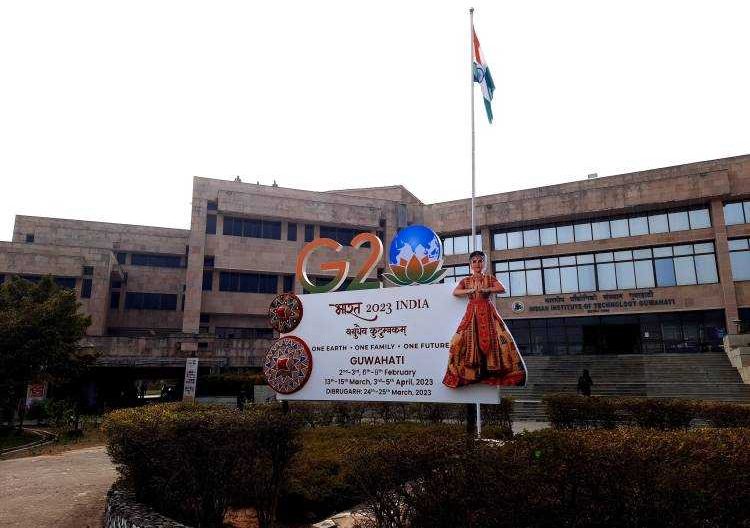
India-Middle East-Europe economic corridor: One of the most important announcements made during the New Delhi summit of G20 was the launch of the India-Middle East-Europe Mega Economic Corridor. This ambitious project has the potential to challenge China’s Belt and Road Initiative (BRI). The key players of the project are India, the UAE, Saudi Arabia, the European Union, France, Italy, Germany, and the US. The project looks to counter China’s BRI in scale and ambition. The corridor holds great potential for economic integration between India, West Asia, and Europe, and for providing a new direction for global connectivity and sustainable development.
This rail and shipping corridor is part of the Partnership for Global Infrastructure Investment (PGII), a collaborative effort among G7 nations to finance infrastructure projects in developing countries. PGII serves as a direct response to China’s BRI. The project’s objective is to facilitate increased trade among participating countries, with a focus on energy products. PGII received approval during the G7 summit in Germany last year and is estimated to cost $600 billion.
READ | India asserts leadership despite G20’s many failings
This project is seen as an ambitious countermeasure to China’s extensive infrastructure programme, which seeks to connect more countries to China’s economy. The BRI has drawn criticism, primarily because many of its corridors pass through low- and middle-income nations. The problem lies in the fact that while China pledges infrastructure development, borrowing substantial sums from Beijing often leads to economic challenges for these financially vulnerable nations.
An earlier report highlighted the alarming debt burden incurred by countries involved in the BRI project. Some participating nations such as Laos, Papua New Guinea, the Maldives, Brunei, Cambodia, and Myanmar now owe more than 10% of their GDP. In contrast, the BRI has propelled the Chinese economy and increased China’s global economic dominance. The estimated cost of the Belt and Road Initiative is a staggering $1 trillion.
What is India-Middle East-Europe economic corridor project?
Returning to the PGII initiative, the corridor will encompass a rail link, an electricity cable, a hydrogen pipeline, and a high-speed data cable, as detailed in a document prepared by European Commission President Ursula von der Leyen. The project is labelled as a green and digital bridge connecting continents and civilizations, designed to enhance efficiency, reduce costs, promote economic cohesion, generate jobs, and cut greenhouse gas emissions.
Will India benefit from this project? Besides various economic advantages, the IMEC project is regarded as India’s breakthrough in establishing deeper connectivity with regions to the northwest of the subcontinent. Apart from countering China’s influence, India has faced challenges from Pakistan, which has historically denied overland access. With IMEC, India may have finally found a solution to connect with both Arabia and Europa, marking a significant departure from previous geopolitical trends.
IMEC is also expected to bolster key railway and port infrastructure companies like Ircon International and Rail Vikas Nigam Ltd. Experts anticipate that ports on India’s western coast could reap substantial benefits from this corridor.
The IMEC consists of an eastern corridor linking India to the Gulf region and a northern corridor connecting the Gulf to Europe. It encompasses railway and ship-rail transit networks and road transport routes connecting India, the UAE, Saudi Arabia, Israel, and Europe. If Indian companies are prioritised for sourcing materials for the infrastructure, domestic suppliers like Steel Authority of India (SAIL) stand to gain from the project. This prospect seems likely given the government’s emphasis on “Make in India” and promoting local manufacturing.
Furthermore, India stands to gain economically since the new corridor is positioned as a counter to China’s Belt and Road Initiative. New Delhi may secure a significant portion of the project for execution. Traditionally, railway infrastructure deals in West Asia have been dominated by Chinese companies. With major economic powers like the United States and European nations joining this initiative, it brings substantial financial and logistical resources to the table.
Like all ambitious projects, IMEC faces several challenges. It necessitates cooperation among many countries, and there is no guarantee that all will participate willingly. For instance, Iran is currently under US sanctions, potentially complicating IMEC’s passage through the region. Another hurdle is the project’s substantial cost, with uncertainties surrounding its financing. The participating countries must devise strategies to fund the project, which poses a significant challenge.
The project also requires the construction of new infrastructure, including railways, highways, and pipelines. This complex and challenging endeavour carries the risk of delays and cost overruns. Moreover, IMEC could have a notable environmental impact, especially if it involves the construction of new roads and pipelines. The participating countries must take measures to mitigate these environmental effects. Security challenges are also a concern since the project passes through regions prone to conflict and instability. This could pose a security risk, necessitating measures to minimise such threats.
Despite these challenges, IMEC has the potential to provide a substantial economic boost to the three regions involved. If successful, it could boost trade and investment, reduce transportation costs, and enhance energy security. However, the project’s success hinges on the participating countries’ ability to overcome these challenges.
As outlined in the Memorandum of Understanding (MoU), the member nations intend to meet within the next sixty days to develop and commit to an action plan with relevant timetables for initiating the project. While there is no doubt that this project is crucial in shaping future geopolitics, much depends on the prompt formation of the new corridor by the G21 nations. The coalition faces the daunting task of balancing financial and ecological sustainability, or it will remain second only to the BRI.
